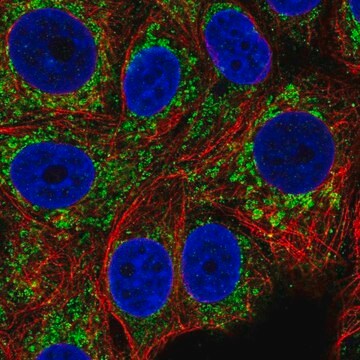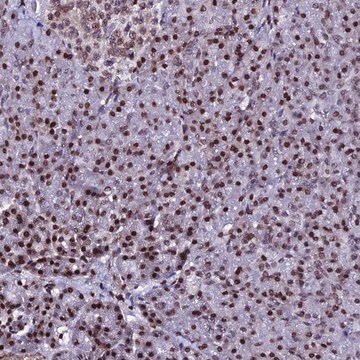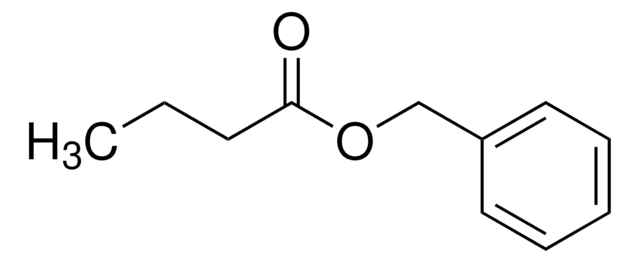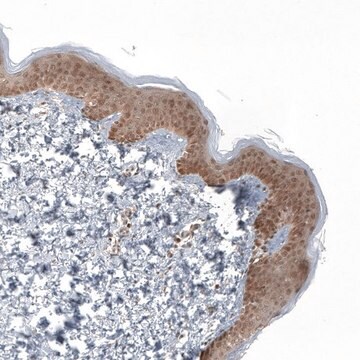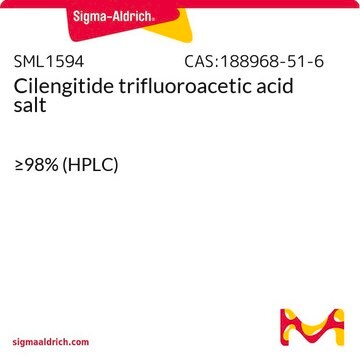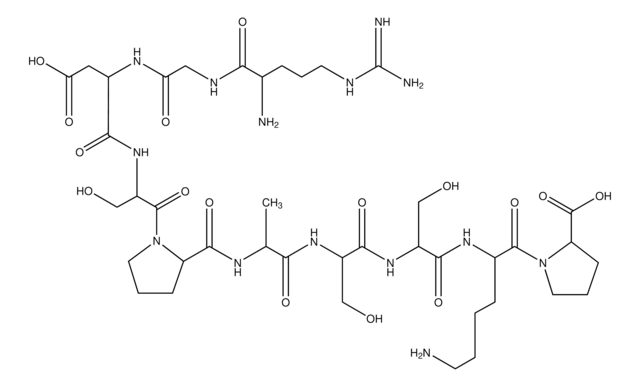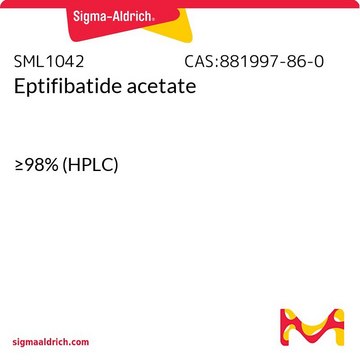About This Item
Produtos recomendados
fonte biológica
synthetic
Nível de qualidade
Ensaio
≥95% (HPLC)
forma
powder
composição
Peptide content, ~70%
técnica(s)
cell culture | mammalian: suitable
temperatura de armazenamento
−20°C
cadeia de caracteres SMILES
N[C@@H](CCCNC(N)=N)C(=O)NCC(=O)N[C@@H](CC(O)=O)C(=O)N[C@@H](CO)C(O)=O
InChI
1S/C15H27N7O8/c16-7(2-1-3-19-15(17)18)12(27)20-5-10(24)21-8(4-11(25)26)13(28)22-9(6-23)14(29)30/h7-9,23H,1-6,16H2,(H,20,27)(H,21,24)(H,22,28)(H,25,26)(H,29,30)(H4,17,18,19)/t7-,8-,9-/m0/s1
chave InChI
NNRFRJQMBSBXGO-CIUDSAMLSA-N
Informações sobre genes
human ... ITGA2B(3674) , ITGB3(3690)
mouse ... Itgb3(16416)
Procurando produtos similares? Visita Guia de comparação de produtos
Amino Acid Sequence
Descrição geral
RGDS has been shown to block fibrinogen-induced aggregation of intact erythrocytes and specific binding of fibrinogen to erythrocyte membranes. The effect of RGDS on transforming growth factor ß1 (TGFß1) mRNA expression and secretion in cultured human mesangial cells has been investigated. RGDS has been utilized in a study of integrin-mediated signal transduction in cultured cells from the sponge Suberites domuncula. RGDS has been demonstrated
to mitigate the binding of Mycobacterium tuberculosis to murine alveolar macrophages
Aplicação
- to study its effects on cell attachment in rats
- to analyse the interaction of fibrinogen with erythrocytes occurs through integrin related receptor
- to pretreat the cells, to assess the role of integrin in the cell attachment process
- to test its competition with platelet-secreted, nanosheet-adsorbed proteins for binding to glycoprotein IIIa (GPIIIa)
Embalagem
Nota de preparo
clear, colorless solution.
Outras notas
Código de classe de armazenamento
11 - Combustible Solids
Classe de risco de água (WGK)
WGK 3
Ponto de fulgor (°F)
Not applicable
Ponto de fulgor (°C)
Not applicable
Equipamento de proteção individual
Eyeshields, Gloves, type N95 (US)
Certificados de análise (COA)
Busque Certificados de análise (COA) digitando o Número do Lote do produto. Os números de lote e remessa podem ser encontrados no rótulo de um produto após a palavra “Lot” ou “Batch”.
Já possui este produto?
Encontre a documentação dos produtos que você adquiriu recentemente na biblioteca de documentos.
Os clientes também visualizaram
Artigos
Tissue engineering has become a key therapeutic tool in the treatment of damaged or diseased organs and tissues, such as blood vessels and urinary bladders.
Nossa equipe de cientistas tem experiência em todas as áreas de pesquisa, incluindo Life Sciences, ciência de materiais, síntese química, cromatografia, química analítica e muitas outras.
Entre em contato com a assistência técnica

